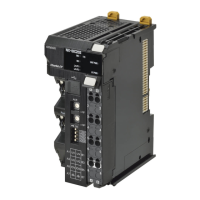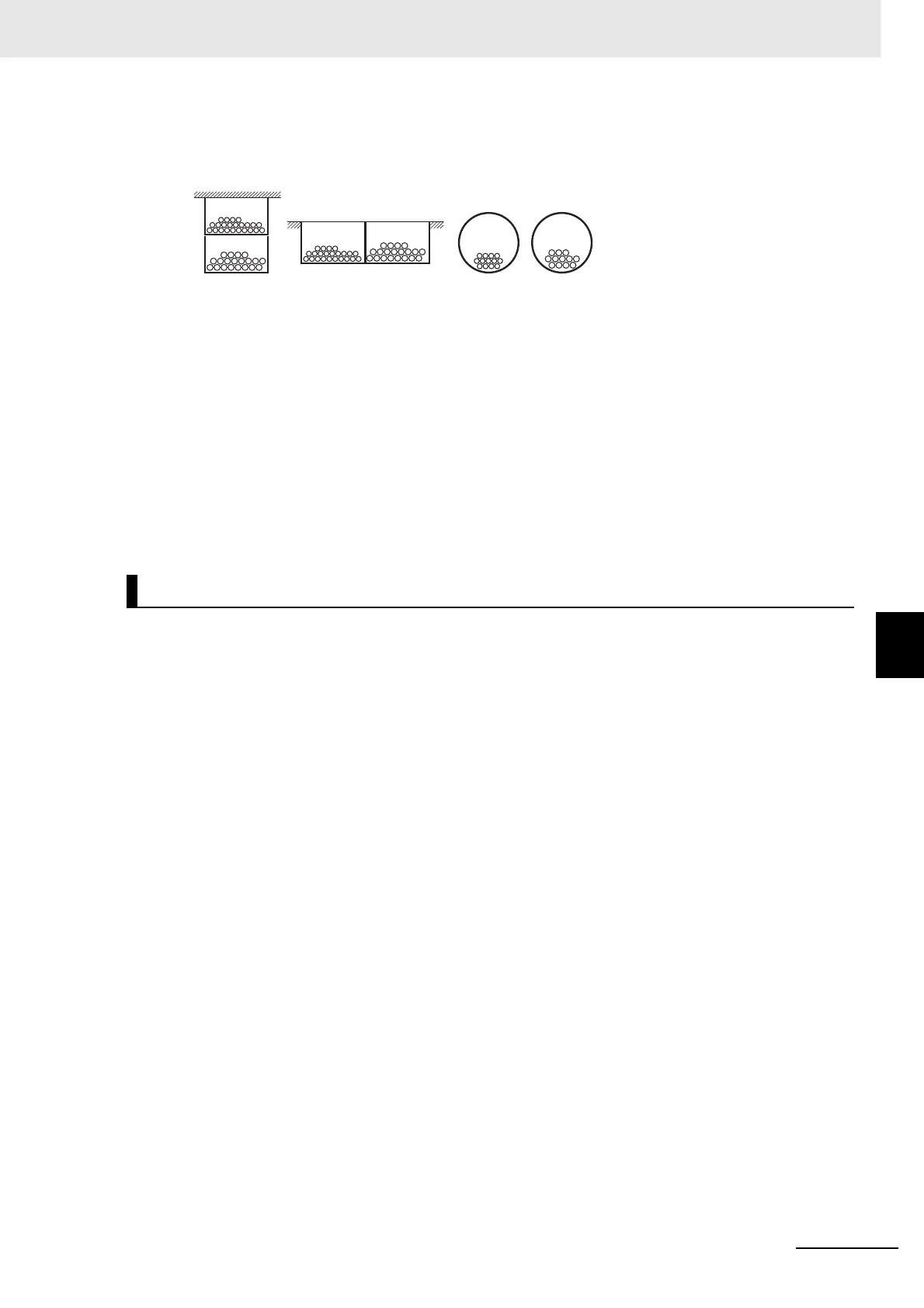6 - 29
6 Installation
NX-series EtherNet/IP Coupler Unit User’s Manual (W536)
6-2 Control Panel Installation
6
6-2-5 Electrical Environment
• Never bundle I/O cables with high-voltage or power lines, and do not route them in close proximity or
parallel to such lines. If output signal lines must be routed in close proximity to such lines, place them
in separate ducts or conduits. Be sure to ground the ducts or conduits.
• If the signal lines and power lines cannot be routed in separate ducts, use shielded cable. Connect
the shield to the ground terminal at the EtherNet/IP Slave Terminal, and leave it unconnected at the
input device.
• Wire the lines so that common impedance does not occur. Such wiring will increase the number of
wires, so use common return circuits. Use thick wires with sufficient allowance for the return circuits,
and bundle them with lines of the same signal level.
• For long I/O lines, wire the input and output signal lines separately.
• Use twisted-pair wires for pilot lamps (and particularly lamps with filaments).
• If noise causes malfunctions, use countermeasures, such as CR surge absorbers and diodes, for
noise sources of input devices and output load devices, as required.
Wiring, and noise countermeasures in particular, are based on experience, and it is necessary to
closely manage wiring based on experience and information in the manuals.
Wiring Routes
Each of the following combinations includes different signal types, properties, or levels. They will
cause the signal-to-noise ratio to drop due to factors such as electrical induction. As a general rule
when wiring, either use separate cables or separate wiring routes for these items. Future mainte-
nance operations and changes to the system will also be made easier by carefully organizing the
wiring from the start.
• Power lines and signal lines
• Input signals and output signals
• Analog signals and digital signals
• High-level signals and low-level signals
• Communications lines and power lines
• DC signals and AC signals
• High-frequency devices (such as Inverters) and signal lines (communications)
Wiring
Observe the following points when wiring power supply and signal cables.
• When routing signal cables with differing characteristics through the same duct, always keep
them separated.
• As much as possible, avoid routing multiple power supply lines through the same duct. If it cannot
be avoided, then construct a partition between them in the duct and ground the partition.
External Wiring
I/O Cable Arrangement
Floor ducts ConduitsSuspended ducts
I/O cables
I/O cables
Power lines
Power lines
I/O cables Power lines

